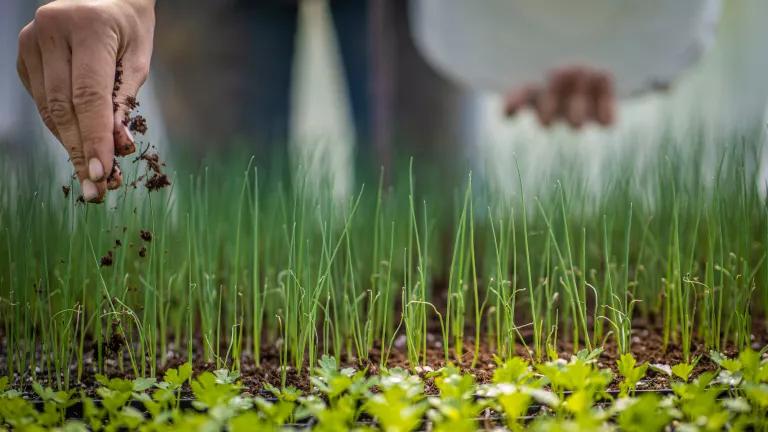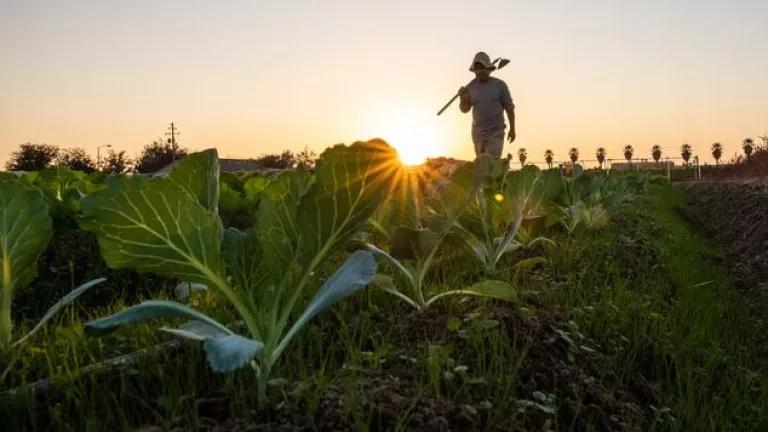
The Amazon is under assault. As spotlighted in the upcoming episode of the Emmy award–winning series Years of Living Dangerously, this rainforest is threatened by a range of environmentally destructive forces. Cattle-ranching is at the top of this list. In fact, according to a 2011 report by the Union of Concerned Scientists, cattle ranches occupy three-quarters of deforested land in the Amazon.
An already enormous—and rapidly growing—global demand for beef fuels this destruction. Worldwide, red meat and poultry production has tripled over the past four decades, and the United Nations predicts that left unchecked, demand for meat will grow 73 percent by 2050.
This escalating appetite for beef not only presents significant health risks to people who consume more red meat, but it will also harm our ability to fight climate change: More cattle will mean more deforestation in forests that store massive amounts of carbon and help to cleanse our atmosphere of carbon dioxide. Through their digestion and manure, more cows will also produce more methane, a greenhouse gas that is 25 times more powerful than carbon dioxide. Manufacturing and applying the synthetic fertilizer that will feed these cattle will also release more nitrous oxide, another potent greenhouse gas.
In order to confront this problem, we must reduce global demand for beef, which could have a big impact in reducing greenhouse gas emissions. In fact, NRDC estimates that eating 30 percent less beef in the United States would be like taking the tailpipe emissions from about 10 million cars off the road each year.
We can reduce our beef consumption in lots of small and easy ways. Beef is about 34 times more greenhouse gas–intensive than legumes like beans and lentils, pound for pound. So to cut the climate change impact of our diets, we can eat more plant-forward menus and move meat from the center of the plate.
Food service companies and restaurants can also do their part. They can offer and market more meat-free entrees and introduce globally inspired dishes that use meat as a condiment. Such changes would be in keeping with market trends. In the National Restaurant Association’s 2016 “What’s Hot” survey, nearly 60 percent of professional chefs listed meatless items among the top culinary trends. And half of consumers between the ages of 25 and 34 are more likely to visit a restaurant that offers healthy options.
Plant-forward menus are also good for us. The World Health Organization (WHO) and the U.S. government–appointed Dietary Guidelines Advisory Committee recently highlighted the strong connection between high red meat consumption and health problems, including obesity, heart disease, diabetes, and cancer. The scientific evidence is so solid that the WHO recently classified the consumption of red meat as a probable human carcinogen. As it turns out, eating less red meat is one of the most effective ways to improve our health.
In the coming weeks, Years of Living Dangerously will highlight the destructive power of global warming and the tools to combat this urgent threat to our planet and public health. As you follow this incredible series, keep in mind the large solutions and the small solutions. Moving to a plant-forward menu could be the easiest—and most delicious—way you can help to confront this problem.




